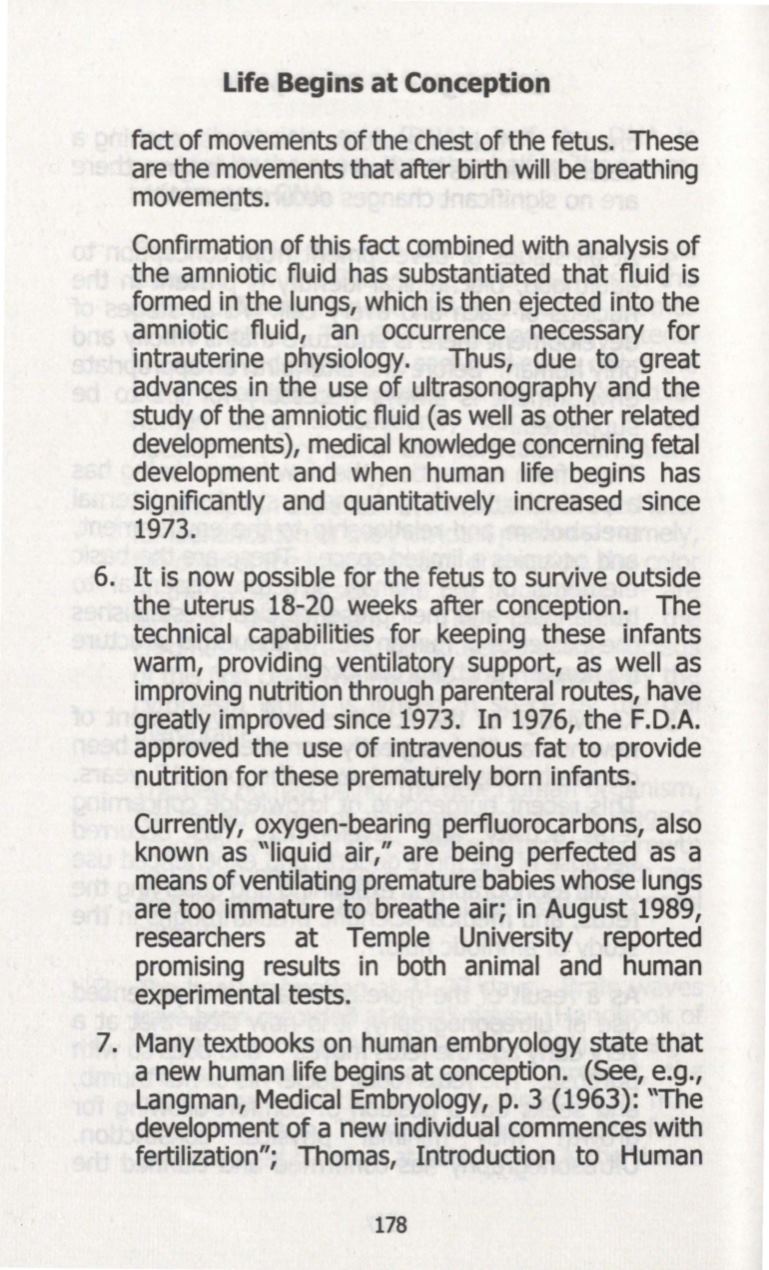

Life Begins at Conception
fact of movements of the chest of the fetus. These
are the movements that after birth will
be
breathing
movements.
Confirmation of this fact combined with analysis of
the amniotic fluid has substantiated that fluid is
formed in the lungs, which is then.ejected into the
amniotic fluid, an occurrence necessary for
intrauterine physiology. Thus, due to great
advances in the use of ultrasonography and the
study of the amniotic fluid (as well as other related
developments), medical knowledge concerning fetal
development and when human life begins has
significantly and quantitatively increased since
1973.
6.
It
is now possible for the fetus to survive outside
the uterus 18-20 weeks after conception. The
technical capabilities for keeping these infants
warm, providing ventilatory support, as well as
improving nutrition through parenteral routes, have
greatly improved since 1973. In 1976, the F.D.A.
approved the use of intravenous fat to provide
nutrition for these prematurely born infants.
Currently, oxygen-bearing perfluorocarbons, also
known as "liquid air," are being perfected as a
means of ventilating premature babies whose lungs
are too immature to breathe air; in August 1989,
researchers at Temple University reported
promising results in both animal and human
experimental tests.
7. Many textbooks on human embryology state that
a new human life begins at conception. (See, e.g.,
Langman, Medical Embryology, p. 3 (1963): "The
development of a new individual commences with
fertilization"; Thomas, Introduction to Human
178
















